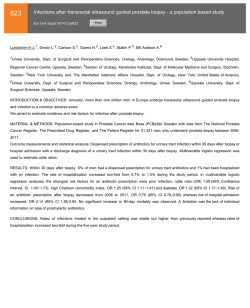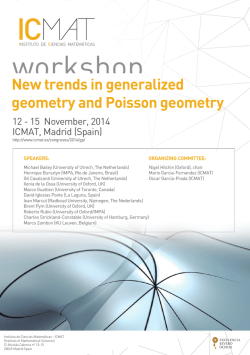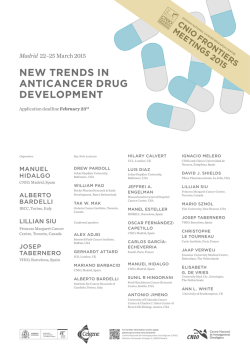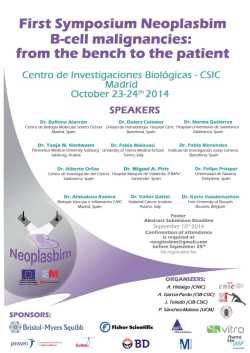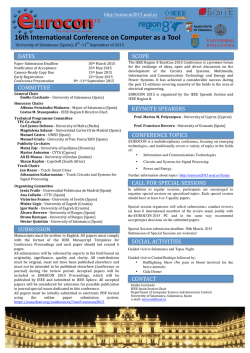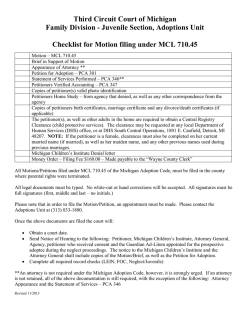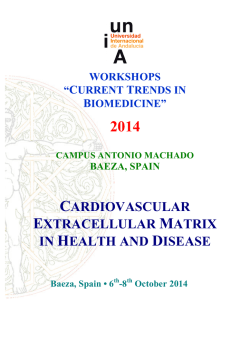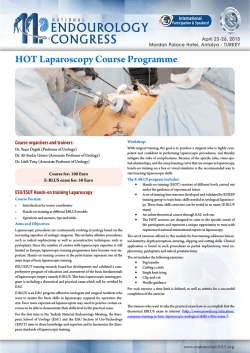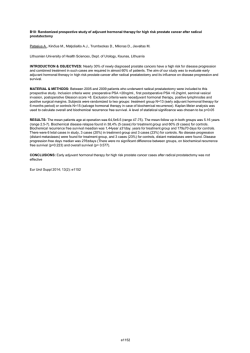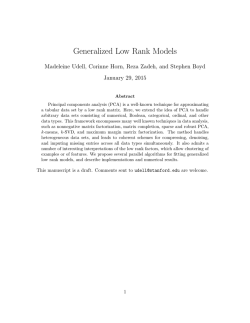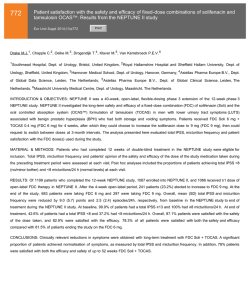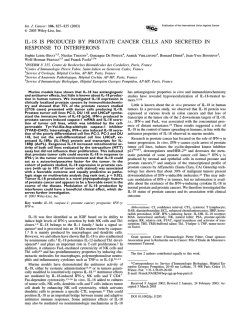
1-s2.0-S1569905614608411-main
854 Diagnose and treatment for clinically localized prostate cancer. Adherence to EAU guidelines on prostate cancer in a nationwide population-based study Eur Urol Suppl 2014;13;e854 Print! Print! Gómez Veiga F.1 , Miñana B. 2 , Rodríguez Antolín A. 3 , Cózar J.M.4 , Pedrosa E. 5 , Grupo Español de Cáncer de Próstata, Spain 1 University 3 12 Hospital A Coruña, Dept. of Urology, A Coruña, Spain, 2 Morales Meseguer General Hospital, Dept. of Urology, Murcia, Spain, De Octubre University Hospital, Dept. of Urology, Madrid, Spain, 4 Virgen De Las Nieves University Hospital, Dept. of Urology, Granada, Spain, 5 Astellas Pharma, S.A., Medical Department, Madrid, Spain INTRODUCTION & OBJECTIVES: Accomplishing the recommendations of clinical practice guidelines allow to decrease the variability in the diagnosis and treatment of Prostate Cancer (PCa), and so to improve patient care. The objective of present study is to assess compliance to EAU Guidelines on Prostate Cancer (2010) in newly diagnosed PCa patients in relation with diagnosis and available treatments. MATERIAL & METHODS: 3,918 newly diagnosed PCa patients with histopathologic confirmation during 2010 in Spain from an epidemiologic, prospective, nationwide study were included. For each new case basic socio-demographic, clinical, treatment and monitoring data were recorded. Diagnosis related variables: number of cores in first biopsy, age, clinical stage (cT), PSA, Gleason Score (GS), Computerized Tomography (CT) or Bone Scan (BS) and NCCN and D´Amico risk stratification. Treatment related variables in patients with localized PCa (low, intermediate, high and locally-advanced) by NCCN and D´Amico risk stratification: 1) Radical prostatectomy (RP): lymphadenectomy (LND) by risk strata; 2) Radiotherapy (RT): type and dose; 3) Brachytherapy (BT) patients by risk strata and GS; 4) Hormonal Therapy (HT): patients in neoadjuvant /concomitant /adjuvant HT with RT and/or BT by risk strata and RT dose. Descriptive analysis (frequency analysis, mean and standard deviation) were done with STATA 10.0 software. RESULTS: Diagnosis: 3,918 newly diagnosed PCa patients, mean age 68.48 (8.18), 64.56% with 8-12 cores in first biopsy. 91.87% of patients >75 years old and PSA20 ng/mL or GS≥8 or cT3. 56.96% with PSA>20 ng/mL. 38.49% with GS≤7. 60.38% in cT2c-cT4 and 51.71% high risk or locally advanced (D´Amico) patients. Treatment for Clinically Localized PCa: 3,326 (84.89%) NCCN, 3,293 (84.05%) D´Amico patients with localized tumor and data of any treatment: 1) RP: LND was performed in 4.64% (D´Amico, NCCN) low risk, 22.81% (D´Amico) and 23.82% (NCCN) intermediate risk and 36.00% (D´Amico) and 49.19% (NCCN) high risk patients. 2) RT: 86.08% with 3D or IMRT; 35.77% with ≥75 Gy dose; 35.27% low risk (D ´Amico, NCCN) received ≥75 Gy dose. 3) BT: 54.81% (D´Amico, NCCN) low risk patients and 29.57% of patients with GS ≥7. 4) HT: 67.19% (D´Amico) and 70.83% (NCCN) low-intermediate risk with RT and/or BT, received neoadjuvant /concomitant /adjuvant HT. CONCLUSIONS: Although the EAU Guidelines on Prostate Cancer are well known, according to results of the present study, the compliance to their recommendations is not high in any of the studied variables related to the diagnosis and treatment of PCa.
© Copyright 2024

